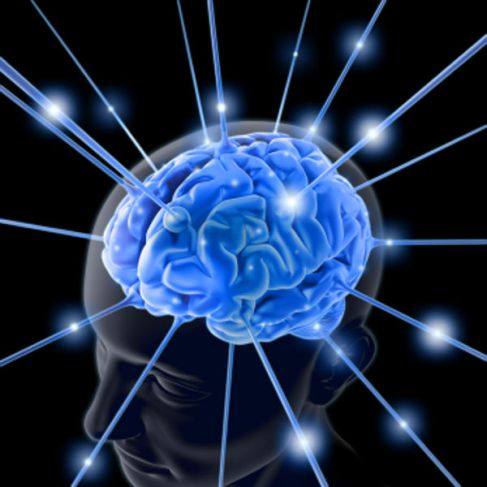What are neurotransmitters?
- Neurotransmitters are chemical messengers that transmit or carry signals from one neuron to another. Thus, they are responsible for the communication between two neurons by traveling across the space between two communicating neurons called a synapse.
Classification of Neurotransmitters based on Function:
1. Excitatory Neurotransmitters
- Excitatory neurotransmitters are termed excitatory because they excite or stimulate the brain. This in turn will fire up the neurons to promote an action potential
2. Inhibitory Neurotransmitters
- Inhibitory neurotransmitters, on the other hand, calms down the brain thus creating a balance especially on an individual’s mood. Inhibitory neurotransmitters are easily depleted during excitatory states.
The Important Neurotransmitters classified based on function
A. Inhibitory Neurotransmitters:
1. Serotonin
- also known as 5-hydroxytryptamine or 5-HT
- A monoamine neurotransmitter synthesized from L-tryptophan amino acid and is stored in vesicles.
- This neurotransmitter is primarily found in the enterochromaffin cells (80%) in the gastrointestinal (GI) tract, serotonergic neurons in the central nervous system (CNS), and in blood platelets.
- In the GI tract, it regulates intestinal movement; in the CNS, it regulates appetite, mood and depression, behavior, sleep, memory, learning and temperature. It also has cardiovascular, muscular, and endocrine functions.
- Serotonin activity starts from the raphe nucleus in the brainstem and extends to all parts of the CNS making it the most expansive neurotransmitter of the brain.
2. GABA (gamma aminobutyric acid)
- Synthesized from glutamate using L-glutamic acid decarboxylase and Vitamin B6 (pyridoxal phosphate).
- GABA is the primary inhibitory neurotransmitter which decreases the neuron’s action potential. It is used by every regions of the brain to “fine-tune” neurotransmission.
- One purpose of GABA is to control over-excited neurons especially during feelings of fear and anxiety, thus it is the main component of some medications that alleviates anxiety and calms the patient down
B. Excitatory Neurotransmitters:
1. Epinephrine
- Derived from amino acids tyrosine and phenylalanine, and is considered a cathecolamine
- Also known as adrenaline, epinephrine is responsible in the human’s fight or flight response
- Released by the chromaffin cells of the medulla of the adrenal gland and some neurons of the central nervous system
- As a hormone, it is carried all throughout the body via the bloodstream
- Released in response to stress
2. Norepinephrine
- Synthesized from dopamine
- Also considered as both hormone and neurotransmitter, norepinephrine or noradrenaline is secreted by the medulla of the adrenal glands, by the nerve endings of the sympathetic nervous system, and locus coeruleus in the brainstem
- Has the same physiologic properties with epinephrine, but functions mainly as a regulator of physiologic activities.
- Norepinephrine is released to cause vasoconstriction, bronchodilation, and to increase blood pressure especially during emergencies
- As a neurotransmitter, it is responsible for concentration and affects the amygdale where responses and attention are controlled and regulated
3. Glutamate
- Is the most important neurotransmitter for normal functioning of the brain
- Glutamine is the most prevalent precursor of glutamate, is released by the glial cells, and is metabolized by glutaminase (a mitochondrial enzyme)
- Some glucose metabolized by the neurons can also be synthesized to produce glutamate through the transamination of 2-oxoglutarate in the tricarboxylic acid (TCA) cycle.
- Glutamate is essential for normal brain cognition, memory, and learning, but too much or too little amount is toxic to the brain
C. Mixed (Excitatory and Inhibitory) Neurotransmitters:
1. Acetycholine
- Is the first neurotransmitter identified and the most common neurotransmitter in both the central and peripheral nervous system
- Rather than to engage in direct neurotransmission, acetylcholine acts as a neuromodulator.
- In the CNS, it acts as a neurotransmitter responsible for attention and arousal while in the PNS, it becomes a part of the autonomic nervous system that activates muscles.
- It is synthesized in the nerve terminals from choline and acetyl coenzyme A (acetyl CoA)
2. Dopamine
- Dopamine is a neurotransmitter responsible for the part of the brain that controls rewards, pleasure, regulation of movement, and emotional response.
- Is produced in the substantia nigra and ventral tegmental area of the brain, and is released by the hypothalamus
- Aside from being a neurotransmitter, it is also a precursor of epinephrine and norepinephrine
- Dopamine acts only on receptors specific for it, and all of its receptors are G protein-coupled receptors (GPCRs)
- The pleasure center of the brain does not only give off feelings of pleasure but also a goal to reach or seek such emotions. This in turn will result to addiction and is common among individuals with low dopamine activity

